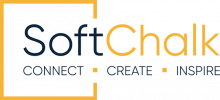 If you’ve been following our blog you’re bound to recognize today’s guest poster as he’s contributed several great posts over the past few months. Please help us in welcoming back Dr. Stephen Holland today. Take it away Steve.
If you’ve been following our blog you’re bound to recognize today’s guest poster as he’s contributed several great posts over the past few months. Please help us in welcoming back Dr. Stephen Holland today. Take it away Steve.
I am currently enrolled in a MOOC, short for Massive Open Online Course. The instructor, Scott E. Page, recently asked students in an open discussion forum to ponder whether or not universities will be around in 100 years, or if online learning will bring about the end to the lecture model. Predicting trends even five years out is a fool’s errand, but the question does point to the changes in progress for education.
For background, the free course is Models of Thinking and 92,000 people from around the world are enrolled. It is offered through Coursera. Professor Page is an engaging instructor, even despite the limitations of video, and embraces alternative delivery systems. I have earlier seen Professor Page through another course I actually purchased that was offered through The Great Courses, which sells courses that are delivered as audios, DVDs, and Internet downloads.
When pondering, Professor Page’s question, I find the Coursera model limiting in terms of effectively delivering instruction. Having said this, let me be clear that I have discovered a number of new concepts and am very pleased that instructors of Prof. Page’s quality are delivering content that I otherwise would never have access to as a learner. I am also already enrolled in other Coursera courses.
Still, when one thinks about it, the Coursera model is nothing more than an extended delivery system of the lecture model that universities have not otherwise enhanced in hundreds of years. When I was an undergraduate at The University of Iowa I remember sitting in lecture halls with at least 500 other students as we listened to various professors lecture. We took notes. We attended weekly meetings with Teaching Assistants. We took tests. What Coursera does is to present almost the same model, only with a recorded video rather than an instructor who is live and present within the moment. The lecture hall now is the computer screen and speaker, and I sit with 92,000 classmates viewing a video in our home offices and convenient coffee shops that have Wi-Fi access. Plus, there are no Teaching Assistants, no way to clarify concepts with an instructor or tutor.
Having taught community college students for 30 years, it is very easy to see what the Coursera model is not contributing to the educational process, which may be the better question. How is it assuring the individual student is learning? At the community college we offer tutors, campus activities, face-to-face interaction with instructors, career connections, and remedial development. That is just to name a few of the major differences. Each of these advantages is also part of the online instructional design I and my colleagues have included into online courses over the past decade.
What I think is the biggest difference is that my community college students receive strong assessments and individualized learning plans. How can Coursera ever match these advantages, with 92,000 people enrolled? It is not possible, especially since the courses are delivered free of charge. Coursera would have to start charging or tweak its funding model in to match what the community college instructors are doing now for students. To extend the point, I and my 92,000 Coursera classmates have a wonderful set of lectures to view, but the assessments fall short of the mark.
I also find myself wanting to be able to consult a resource. No textbook is required for the course, although there are readings provided. Many can be downloaded. I also find no bibliography, which I think is a must to help me make connections not only to the course topics but also for applying concepts in my own world. Ironically, despite having 92,000 classmates I am still alone in my individual learning process. I am not connected to this community, and one thing I know about online learners is that we want to feel connected. Even in answering this question online I am not able to cope with the possibility that 92,000 students could respond. In comparison, the courses I teach have online discussion groups that are designed so that no more than eight or nine students are in one group. As a teacher, it is so much easier to guide learners when the focus is more on quality than quantity.
Finally, it is possible to receive college credit through these MOOCs. Certificates can be earned and turned into college credits that can be transferred to home colleges. I am not so interested in the certificates myself and not pursuing them. Thus, I am skipping the quizzes and tests. I do see the certificate option as a challenge, though, to the college campus model and the value of the degree awarded. I also wonder how different colleges will address this. Will they accept the certificates as proof of course credit that should be counted toward a degree?
To conclude, I am thankful to have the MOOC option as I am finding through Coursera a diversity of ideas to learn. I see value. However, I think that the MOOCs have limitations when it comes to assessing learning. As an educator, and student, I want a stronger guarantee that the certificate earned has merit, when applied to a degree.
 Steve Holland teaches English and Education classes online through the Iowa Community College Online Consortium (ICCOC). In 2012, the ICCOC honored him as Teacher of the Year. He recently retired after 25 years of teaching with Eastern Iowa Community College, but he continues to teach and serve as an education consultant. He holds a B.A. in journalism, an M.A. in English, an Ed.S. in Education, and an Ph.D. in Education, all through The University of Iowa. He has also served as a judge for Softchalk’s annual Lesson Challenge.
Steve Holland teaches English and Education classes online through the Iowa Community College Online Consortium (ICCOC). In 2012, the ICCOC honored him as Teacher of the Year. He recently retired after 25 years of teaching with Eastern Iowa Community College, but he continues to teach and serve as an education consultant. He holds a B.A. in journalism, an M.A. in English, an Ed.S. in Education, and an Ph.D. in Education, all through The University of Iowa. He has also served as a judge for Softchalk’s annual Lesson Challenge.

Leave a Reply